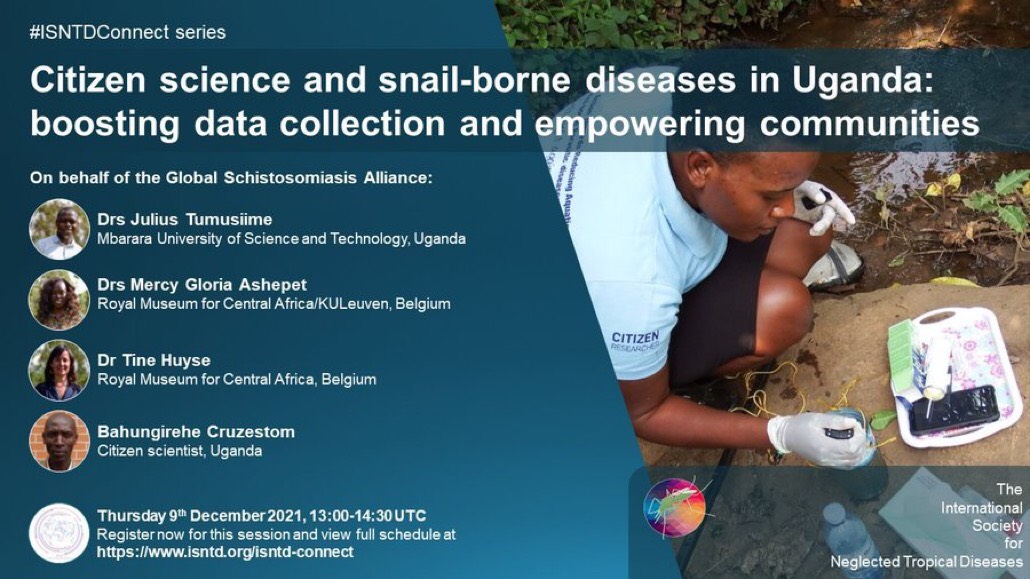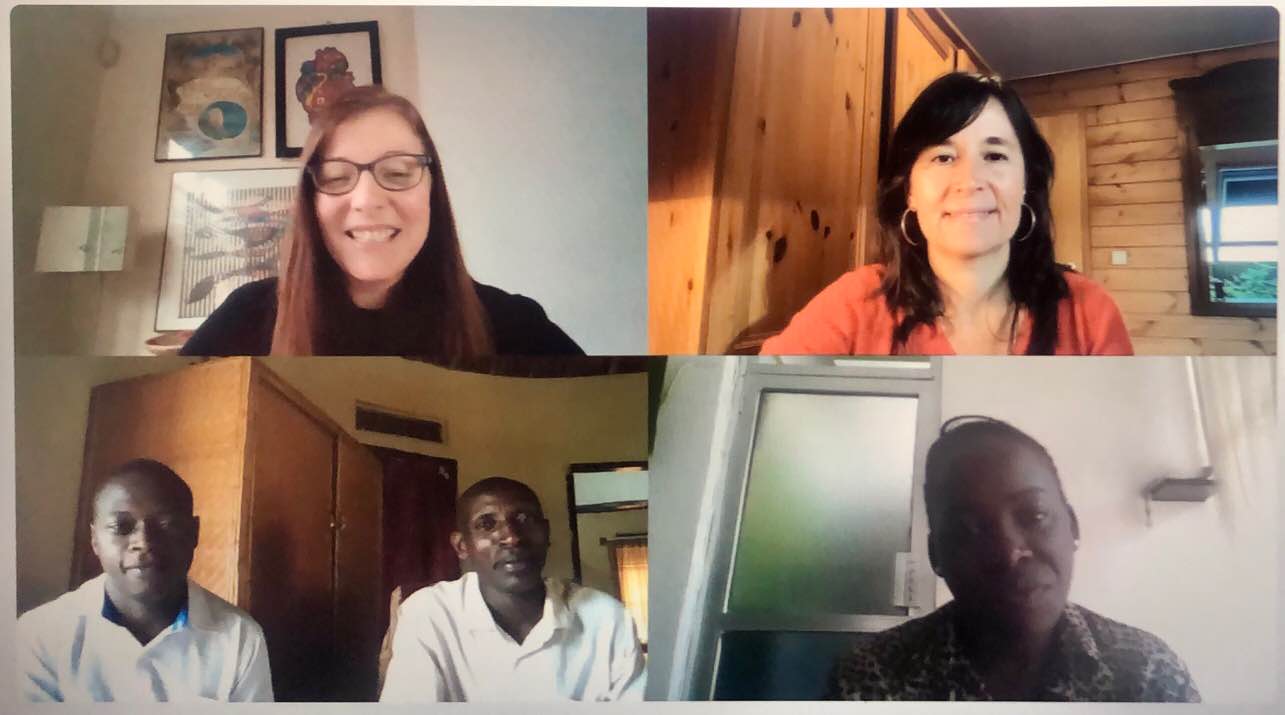A citizen science approach to control schistosomiasis
by N. Valderrama Bhraunxs

Today, a great team presented the promising benefits of citizen science in the identification of high-risk infectious areas for schistosomiasis in Lake Albert, Uganda; during a webinar organized by the International Society for Neglected Tropical Diseases (ISNTD).

Tine Huyse, ATRAP project leader, gave an introduction to the project and explained the social, biological and geographical components in it. After, Julius Tumusiime, PhD student at Mbarara University of Science and Technology, explained all the workflow from the recruitment process of the citizen scientists until the validation step with the expert data. Later, Mercy Ashepet, PhD student at the Katholieke Universiteit of Leuven, exposed the motivation behind the participation of citizen scientists in the project. The webinar concluded with the noteworthy participation of Cruzestom Bahungirehe, citizen scientist in the ATRAP project Uganda, sharing with us his inspiration to be part of this initiative.
More info:
Royal Museum of Central Africa note: https://www.africamuseum.be/en/research/discover/news/atrap
Watch again the webinar here: https://bit.ly/3oFB975
